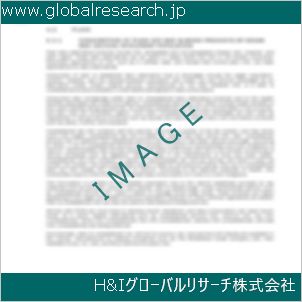Table of Contents
1 Industry Overview of Mercurysulfate
1.1 Definition and Specifications of Mercurysulfate
1.1.1 Definition of Mercurysulfate
1.1.2 Specifications of Mercurysulfate
1.2 Classification of Mercurysulfate
1.3 Applications of Mercurysulfate
1.3.1 Nuclear Application
1.3.2 Non-Nuclear Application
1.4 Industry Chain Structure of Mercurysulfate
1.5 Industry Overview and Major Regions Status of Mercurysulfate
1.5.1 Industry Overview of Mercurysulfate
1.5.2 Global Major Regions Status of Mercurysulfate
1.6 Industry Policy Analysis of Mercurysulfate
1.7 Industry News Analysis of Mercurysulfate
2 Manufacturing Cost Structure Analysis of Mercurysulfate
2.1 Raw Material Suppliers and Price Analysis of Mercurysulfate
2.2 Equipment Suppliers and Price Analysis of Mercurysulfate
2.3 Labor Cost Analysis of Mercurysulfate
2.4 Other Costs Analysis of Mercurysulfate
2.5 Manufacturing Cost Structure Analysis of Mercurysulfate
2.6 Manufacturing Process Analysis of Mercurysulfate
3 Technical Data and Manufacturing Plants Analysis of Mercurysulfate
3.1 Capacity and Commercial Production Date of Global Mercurysulfate Major Manufacturers in 2023
3.2 Manufacturing Plants Distribution of Global Mercurysulfate Major Manufacturers in 2023
3.3 R&D Status and Technology Source of Global Mercurysulfate Major Manufacturers in 2023
3.4 Raw Materials Sources Analysis of Global Mercurysulfate Major Manufacturers in 2023
4 Capacity, Production and Revenue Analysis of Mercurysulfate by Regions, Types and Manufacturers
4.1 Global Capacity, Production and Revenue of Mercurysulfate by Regions 2019-2024
4.2 Global and Major Regions Capacity, Production, Revenue and Growth Rate of Mercurysulfate 2019-2024
4.3 Global Capacity, Production and Revenue of Mercurysulfate by Types 2019-2024
4.4 Global Capacity, Production and Revenue of Mercurysulfate by Manufacturers 2019-2024
5 Price, Cost, Gross and Gross Margin Analysis of Mercurysulfate by Regions, Types and Manufacturers
5.1 Price, Cost, Gross and Gross Margin Analysis of Mercurysulfate by Regions 2019-2024
5.2 Price, Cost, Gross and Gross Margin Analysis of Mercurysulfate by Types 2019-2024
5.3 Price, Cost, Gross and Gross Margin Analysis of Mercurysulfate by Manufacturers 2019-2024
6 Consumption Volume, Consumption Value and Sale Price Analysis of Mercurysulfate by Regions, Types and Applications
6.1 Global Consumption Volume and Consumption Value of Mercurysulfate by Regions 2019-2024
6.2 Global and Major Regions Consumption Volume, Consumption Value and Growth Rate of Mercurysulfate 2019-2024
6.3 Global Consumption Volume and Consumption Value of Mercurysulfate by Types 2019-2024
6.4 Global Consumption Volume and Consumption Value of Mercurysulfate by Applications 2019-2024
6.5 Sale Price of Mercurysulfate by Regions 2019-2024
6.6 Sale Price of Mercurysulfate by Types 2019-2024
6.7 Sale Price of Mercurysulfate by Applications 2019-2024
6.8 Market Share Analysis of Mercurysulfate by Different Sale Price Levels
7 Supply, Import, Export and Consumption Analysis of Mercurysulfate
7.1 Supply, Consumption and Gap of Mercurysulfate 2019-2024
7.2 Global Capacity, Production, Price, Cost, Revenue, Supply, Import, Export and Consumption of Mercurysulfate 2019-2024
7.3 USA Capacity, Production, Price, Cost, Revenue, Supply, Import, Export and Consumption of Mercurysulfate 2019-2024
7.4 EU Capacity, Production, Price, Cost, Revenue, Supply, Import, Export and Consumption of Mercurysulfate 2019-2024
7.5 China Capacity, Production, Price, Cost, Revenue, Supply, Import, Export and Consumption of Mercurysulfate 2019-2024
7.6 Japan Capacity, Production, Price, Cost, Revenue, Supply, Import, Export and Consumption of Mercurysulfate 2019-2024
8 Major Manufacturers Analysis of Mercurysulfate
8.1 Manufacturer One
8.1.1 Company Profile
8.1.2 Product Picture and Specifications
8.1.2.1 Type I
8.1.2.2 Type II
8.1.2.3 Type III
8.1.3 Capacity, Production, Price, Cost, Gross and Revenue
8.1.4 Contact Information
8.2 Manufacturer Two
8.2.1 Company Profile
8.2.2 Product Picture and Specifications
8.2.2.1 Type I
8.2.2.2 Type II
8.2.2.3 Type III
8.2.3 Capacity, Production, Price, Cost, Gross and Revenue
8.2.4 Contact Information
8.3 Manufacturer Three
8.3.1 Company Profile
8.3.2 Product Picture and Specifications
8.3.2.1 Type I
8.3.2.2 Type II
8.3.2.3 Type III
8.3.3 Capacity, Production, Price, Cost, Gross and Revenue
8.3.4 Contact Information
8.4 Manufacturer Four
8.4.1 Company Profile
8.4.2 Product Picture and Specifications
8.4.2.1 Type I
8.4.2.2 Type II
8.4.2.3 Type III
8.4.3 Capacity, Production, Price, Cost, Gross and Revenue
8.4.4 Contact Information
8.5 Manufacturer Five
8.5.1 Company Profile
8.5.2 Product Picture and Specifications
8.5.2.1 Type I
8.5.2.2 Type II
8.5.2.3 Type III
8.5.3 Capacity, Production, Price, Cost, Gross and Revenue
8.5.4 Contact Information
…
9 Marketing Trader or Distributor Analysis of Mercurysulfate
9.1 Marketing Channels Status of Mercurysulfate
9.2 Traders or Distributors with Contact Information of Mercurysulfate by Regions
9.3 Ex-work Price, Channel Price and End Buyer Price Analysis of Mercurysulfate
9.4 Regional Import, Export and Trade Analysis of Mercurysulfate
10 Industry Chain Analysis of Mercurysulfate
10.1 Upstream Major Raw Materials Suppliers Analysis of Mercurysulfate
10.1.1 Major Raw Materials Suppliers with Contact Information Analysis of Mercurysulfate
10.1.2 Major Raw Materials Suppliers with Supply Volume Analysis of Mercurysulfate by Regions
10.2 Upstream Major Equipment Suppliers Analysis of Mercurysulfate
10.2.1 Major Equipment Suppliers with Contact Information Analysis of Mercurysulfate
10.2.2 Major Equipment Suppliers with Product Pictures Analysis of Mercurysulfate by Regions
10.3 Downstream Major Consumers Analysis of Mercurysulfate
10.3.1 Major Consumers with Contact Information Analysis of Mercurysulfate
10.3.2 Major Consumers with Consumption Volume Analysis of Mercurysulfate by Regions
10.4 Supply Chain Relationship Analysis of Mercurysulfate
11 Development Trend of Analysis of Mercurysulfate
11.1 Capacity, Production and Revenue Forecast of Mercurysulfate by Regions and Types
11.1.1 Global Capacity, Production and Revenue of Mercurysulfate by Regions 2024-2029
11.1.2 Global and Major Regions Capacity, Production, Revenue and Growth Rate of Mercurysulfate 2024-2029
11.1.3 Global Capacity, Production and Revenue of Mercurysulfate by Types 2024-2029
11.2 Consumption Volume and Consumption Value Forecast of Mercurysulfate by Regions, Types and Applications
11.2.1 Global Consumption Volume and Consumption Value of Mercurysulfate by Regions 2024-2029
11.2.2 Global and Major Regions Consumption Volume, Consumption Value and Growth Rate of Mercurysulfate 2024-2029
11.2.3 Global Consumption Volume and Consumption Value of Mercurysulfate by Types 2024-2029
11.2.4 Global Consumption Volume and Consumption Value of Mercurysulfate by Applications 2024-2029
11.3 Supply, Import, Export and Consumption Forecast of Mercurysulfate
11.3.1 Supply, Consumption and Gap of Mercurysulfate 2024-2029
11.3.2 Global Capacity, Production, Price, Cost, Revenue, Supply, Import, Export and Consumption of Mercurysulfate 2024-2029
11.3.3 USA Capacity, Production, Price, Cost, Revenue, Supply, Import, Export and Consumption of Mercurysulfate 2024-2029
11.3.4 EU Capacity, Production, Price, Cost, Revenue, Supply, Import, Export and Consumption of Mercurysulfate 2024-2029
11.3.5 China Capacity, Production, Price, Cost, Revenue, Supply, Import, Export and Consumption of Mercurysulfate 2024-2029
11.3.6 Japan Capacity, Production, Price, Cost, Revenue, Supply, Import, Export and Consumption of Mercurysulfate 2024-2029
12 New Project Investment Feasibility Analysis of Mercurysulfate
12.1 New Project SWOT Analysis of Mercurysulfate
12.2 New Project Investment Feasibility Analysis of Mercurysulfate
13 Conclusion of the Global Mercurysulfate (CAS 7783-35-9) Industry 2024 Market Research Report
| ※参考情報 硫酸水銀(II)は、化学式 HgSO₄ で表される化合物で、無機化合物として分類されます。CAS番号は 7783-35-9 で、主に水銀 (Hg) と硫酸 (H₂SO₄) から生成されます。この化合物は、水銀の一種であり、その特性や用途において興味深い側面を持っています。 硫酸水銀は、一般的に無色の結晶または白色の粉末として存在します。水に溶けにくいですが、強酸や有機溶媒には溶解する特性があります。そのため、硫酸水銀は様々な化学反応において重要な役割を果たすことがあります。 この化合物の特徴の一つは、その毒性にあります。水銀は重金属に分類され、有毒な性質を持つため、硫酸水銀もその毒性を持っています。体内に取り込まれると神経系や腎臓に悪影響を及ぼし、慢性的な健康問題を引き起こす可能性があります。そのため、硫酸水銀を取り扱う際には、十分な注意が必要です。 硫酸水銀の用途は多岐にわたりますが、主なものとしては分析化学や無機合成において使用されることが挙げられます。特に、硫酸水銀は水銀を含む化合物を合成するための前駆体として利用されることがあります。また、化学分析においては、試薬として用いられることがあります。 さらに、硫酸水銀は有機化学においても重要な試薬です。有機反応における触媒としての役割や、有機分子の合成反応において必要な中間体の生成に関与することがあります。このように、硫酸水銀は化学反応の幅広い分野で重宝されていることから、その化学的特性や挙動が研究されています。 関連技術としては、硫酸水銀を含む合成方法や、それを利用した創薬の研究が進行しています。また、近年では水銀を含む物質に対する環境規制が強化されているため、硫酸水銀の取扱いや廃棄方法についても新たな技術の開発が求められています。 硫酸水銀は、その有用な特性と毒性から、様々な研究や産業において重要な役割を果たしています。しかし、その取り扱いには十分な注意と適切な安全対策が必要であり、今後もさまざまな分野での応用が期待されています。以上の点を踏まえ、硫酸水銀は化学分野における重要な物質であると言えます。 |
❖ 免責事項 ❖
http://www.globalresearch.jp/disclaimer


-gr.jpg)









